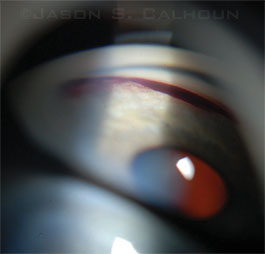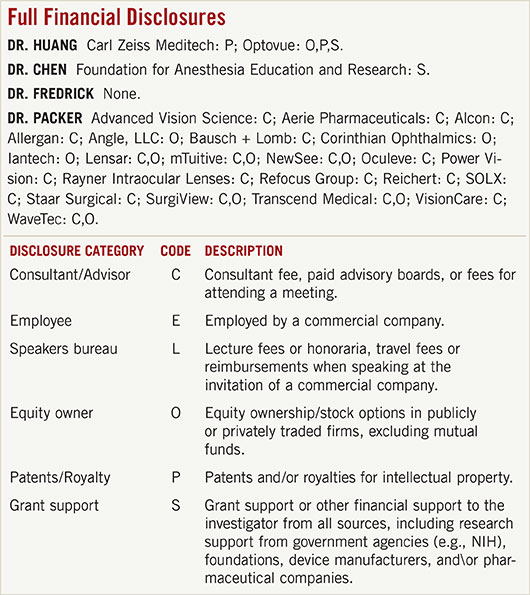Download PDF
The work of “a curious and industrious medical student” uncovered startling statistics on pediatric eye injuries caused by nonpowder guns, said Douglas Fredrick, MD, Vice Chair for Clinical Affairs and clinical professor of ophthalmology at Stanford University Medical School. The student, Rachel Lee, was surprised by the extent of ocular trauma suffered by a boy who had been injured by a “benign-sounding” airsoft gun. That prompted Ms. Lee to analyze data (2002-2012) in the U.S. Consumer Product Safety Commission’s National Electronic Injury Surveillance System and to coauthor an epidemiologic study with Dr. Fredrick.1
 |
|
TRAUMA FROM TOY GUN. Goniophoto shows bleeding into the trabecular meshwork and chamber angle after a BB gun injury.
|
Traumatic toys. Nonpowder guns include paintball guns; BB and pellet guns, which fire metal spheres or pellets; and the increasingly popular airsoft guns, which are replicas of real firearms and shoot lightweight, 6-mm plastic bullets. All of these are capable of inflicting eye trauma, ranging from hyphema and corneal abrasion to more severe injuries such as lens dislocation, retinal detachment, and globe rupture.
The authors reported that about 3,160 children were treated in 2012 in U.S. emergency departments for eye injuries from these guns; and, since 2010, rates of hospital admissions for air gun eye injuries have increased by more than 600%. In fact, these guns are responsible for the majority of pediatric eye injuries that require hospital admission. What’s more, there may be lasting visual consequences for many young patients: About 28% of documented airsoft- or BB gun–related cases had VA worse than 20/50 after initial treatment.
The ophthalmologist’s role. Dr. Fredrick said that any physician who works with children “must look at the health of the whole child, not only the child’s eyes.” He added, “Just as we should advocate against smoking, drug and alcohol use, and other harmful behaviors, we should discourage the use of dangerous toys, like these guns.” Parents who choose to let their children play with these toys must be responsible for making sure that the kids are closely supervised and always wear eye protection.
Noting that there are no federal laws regulating nonpowder guns and that a majority of states allow minors to purchase and possess these guns, Dr. Fredrick suggested that ophthalmologists work with local pediatricians to educate their legislators about these toys’ potential for harm. “Anything that protects the health of our patients is worth getting involved in,” he said.
—Peggy Denny
___________________________
1 Lee R, Fredrick D. J AAPOS. 2015;19(2):163-168.
___________________________
Relevant financial disclosures—Dr. Fredrick: None.
For full disclosures and disclosure key, see below.

More from this month's News in Review